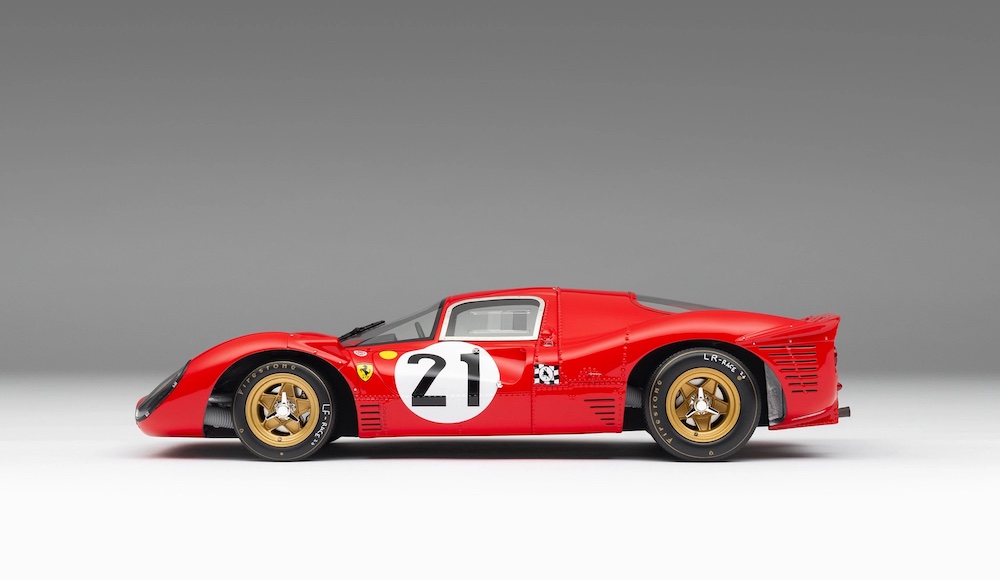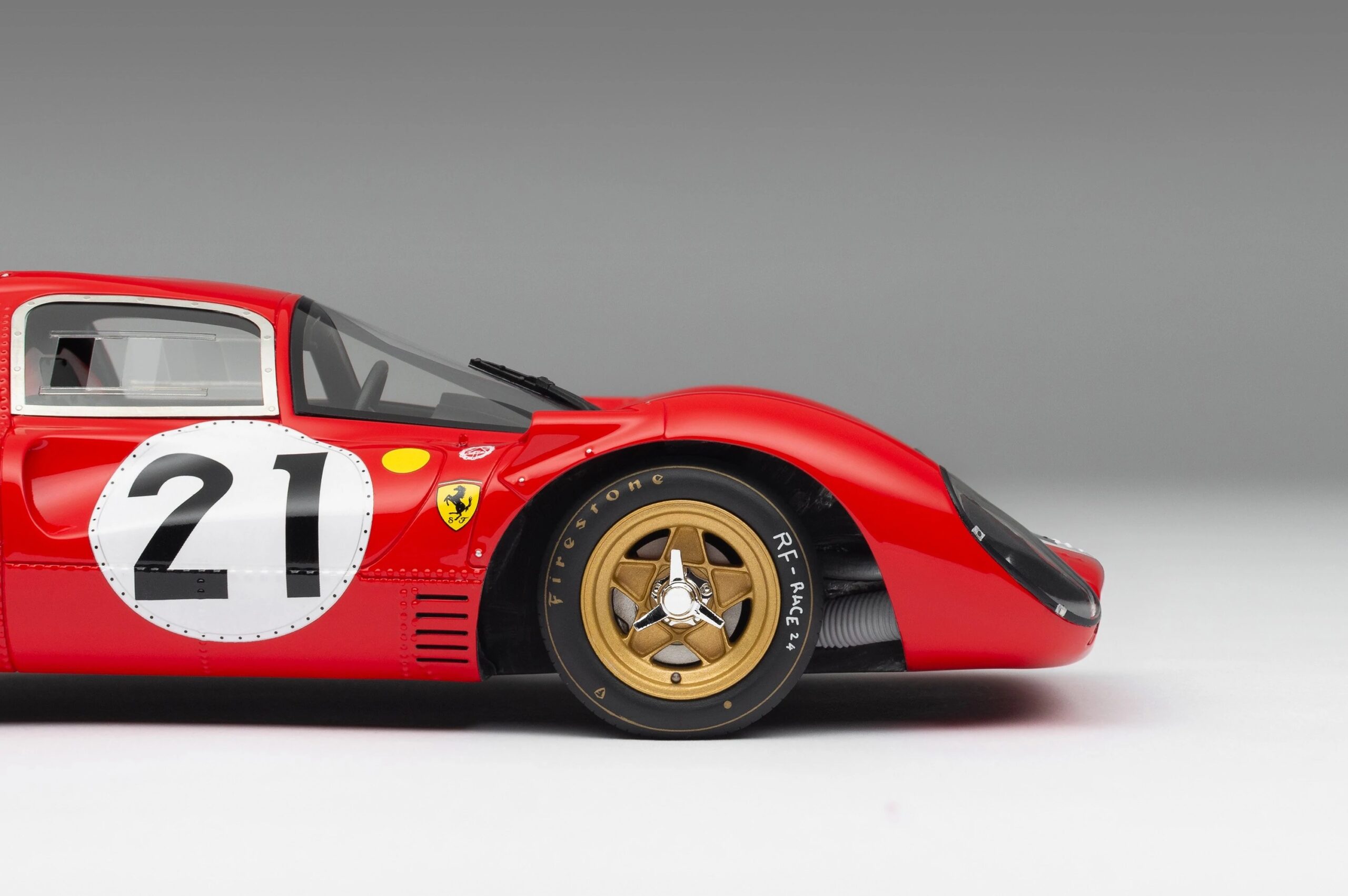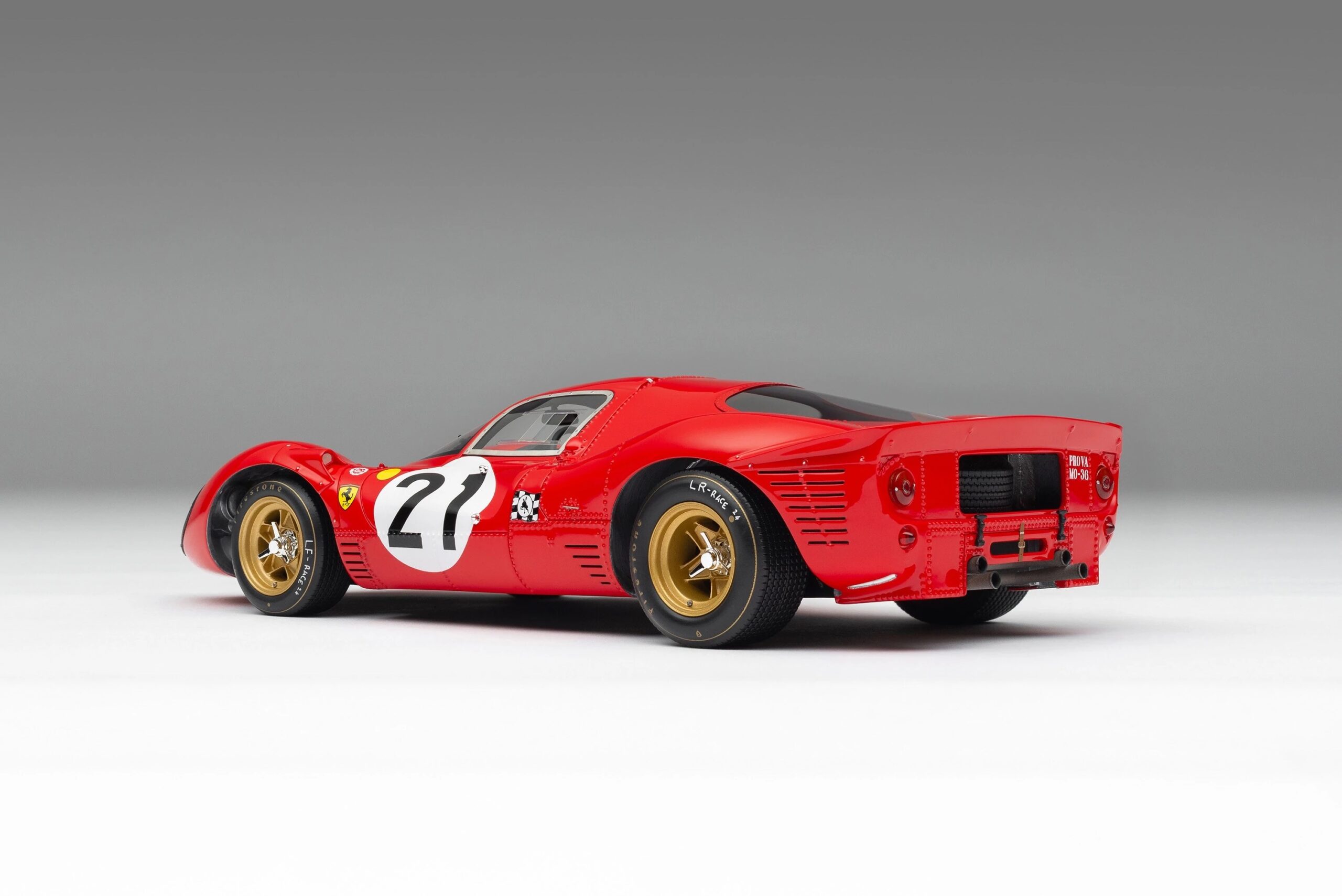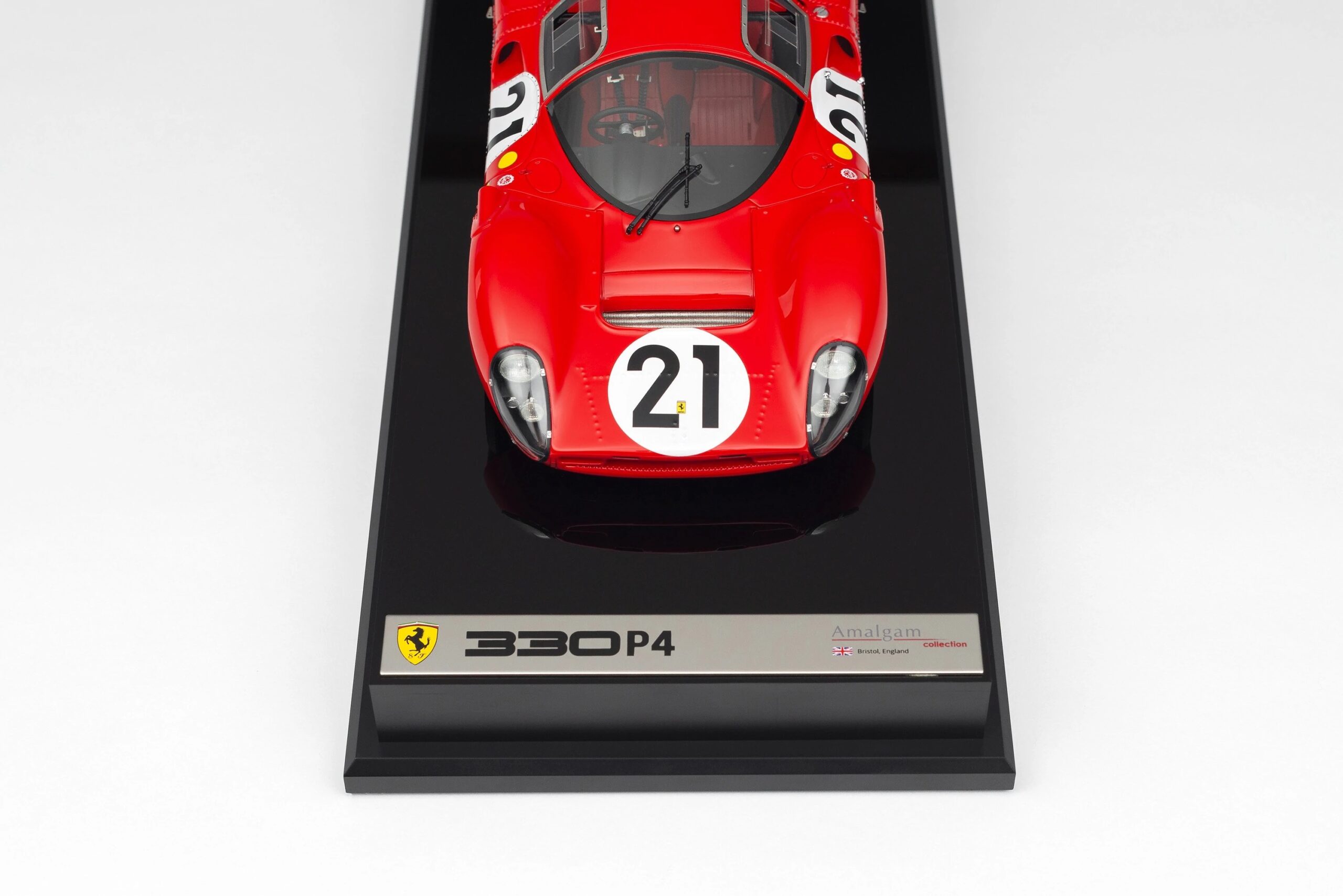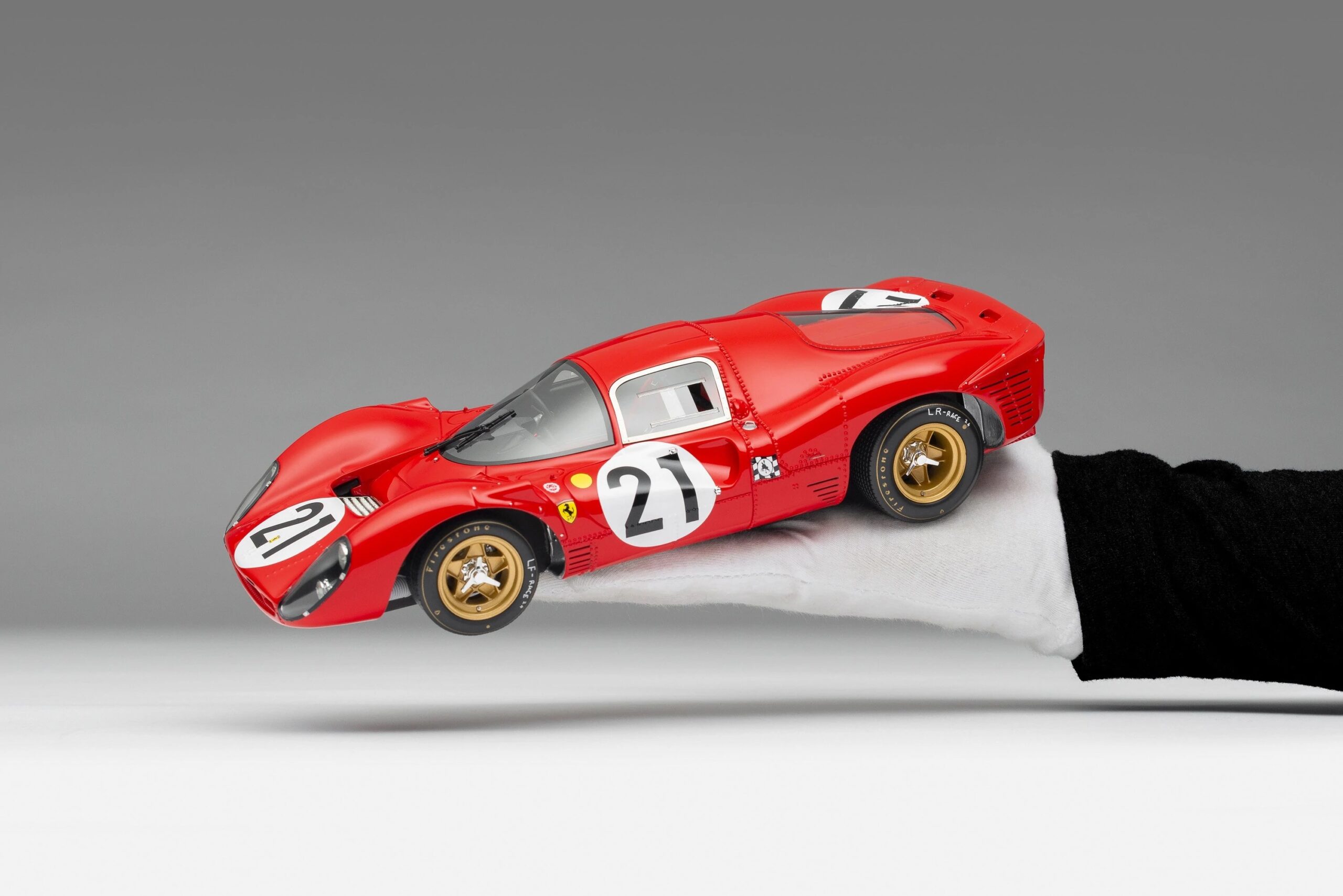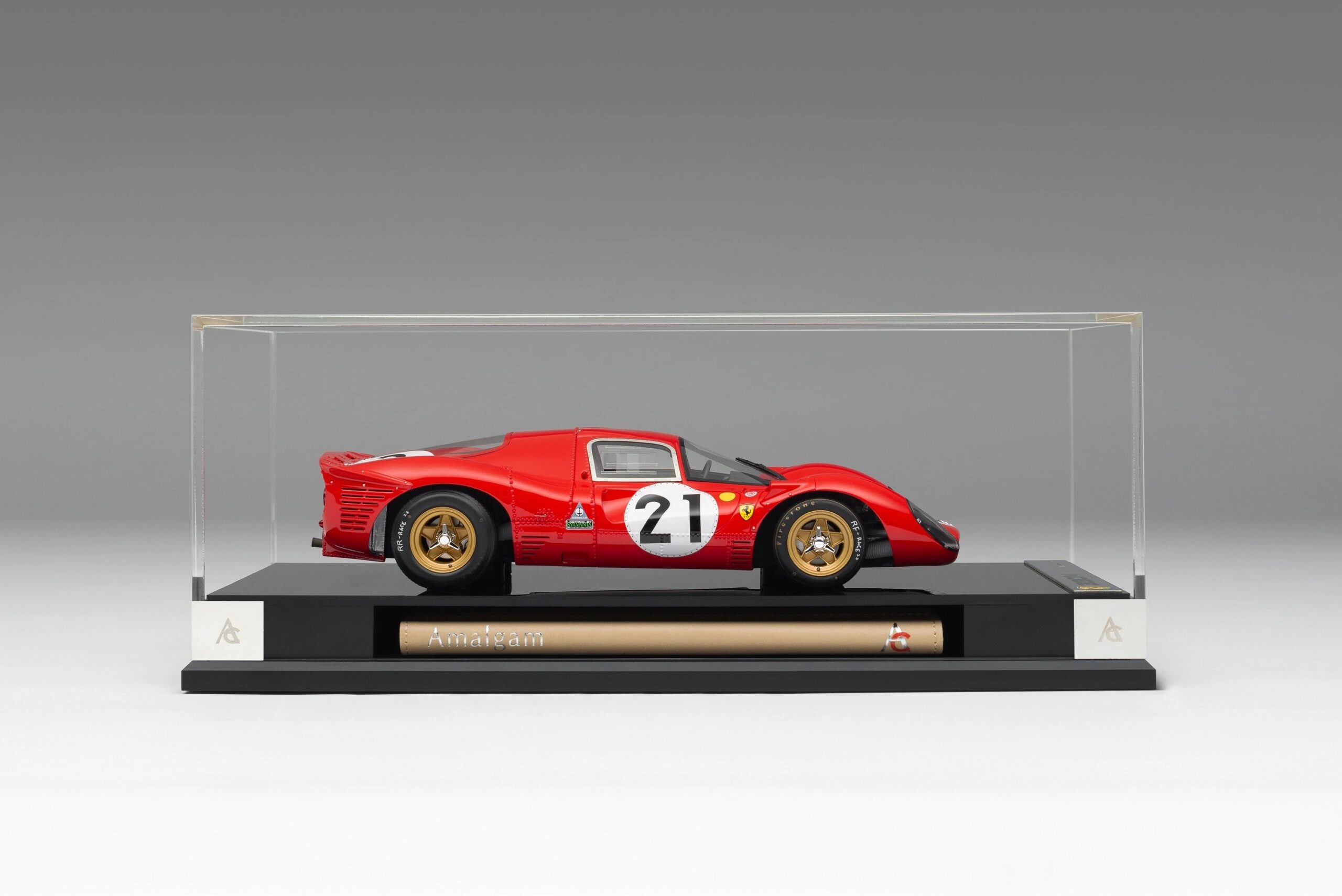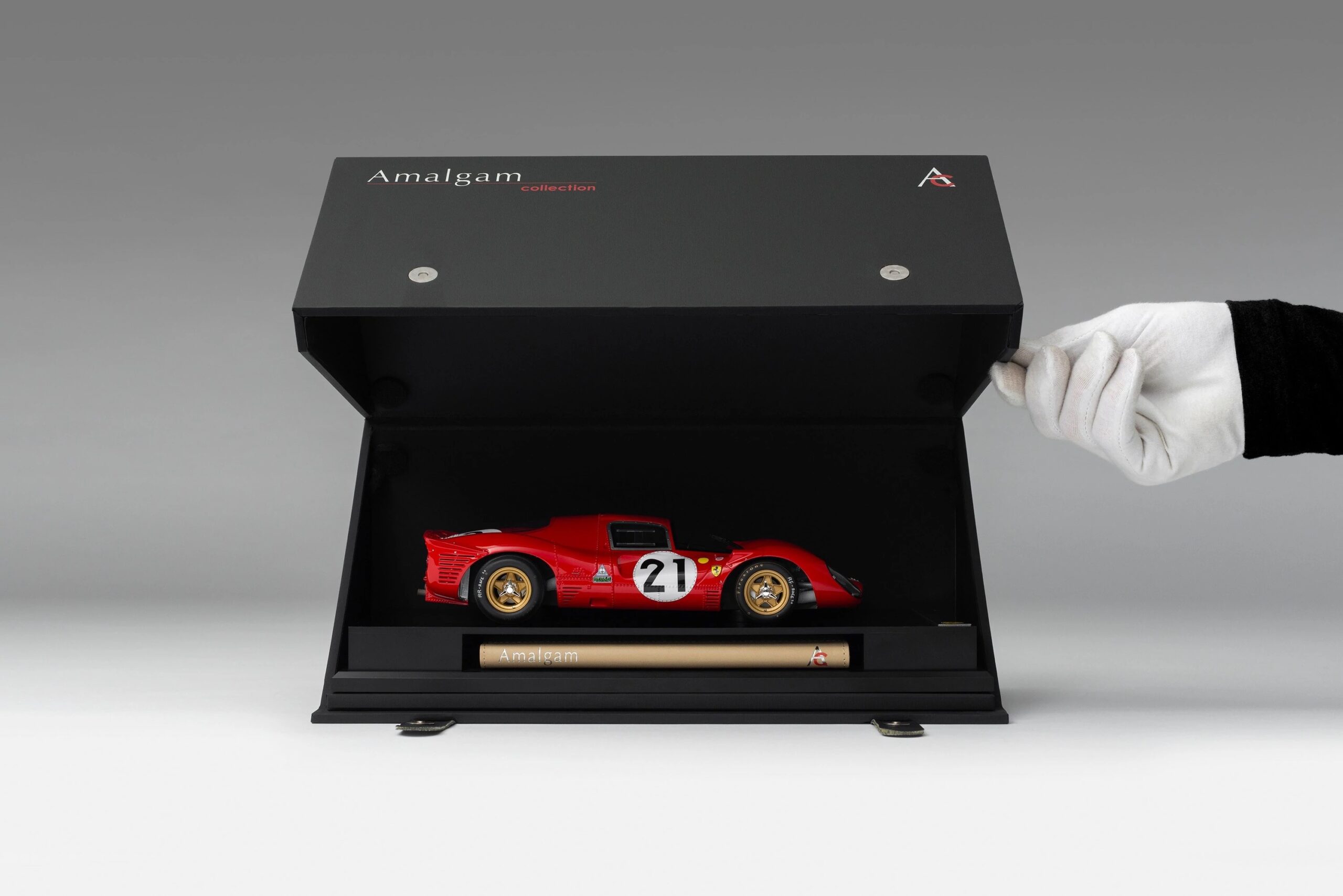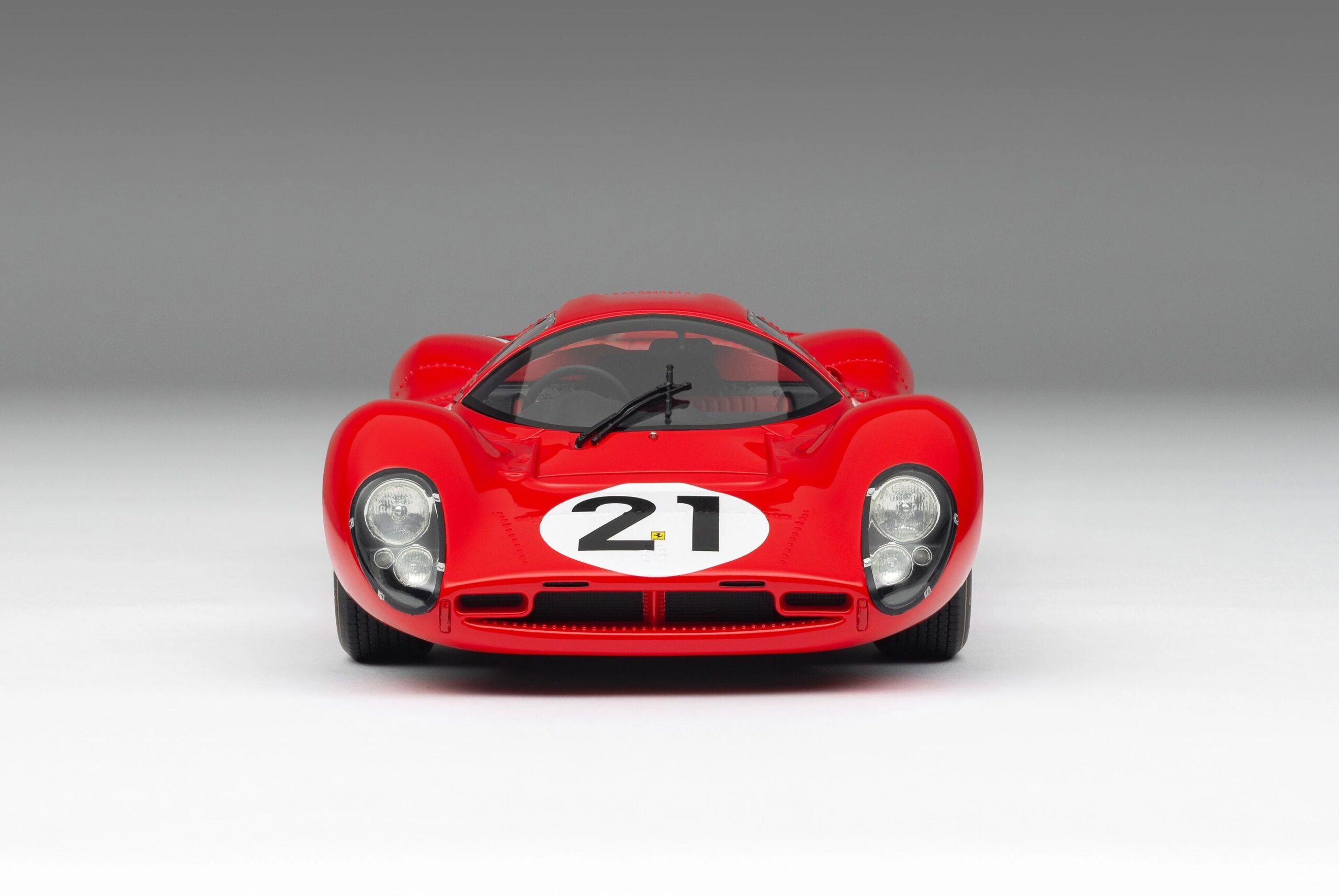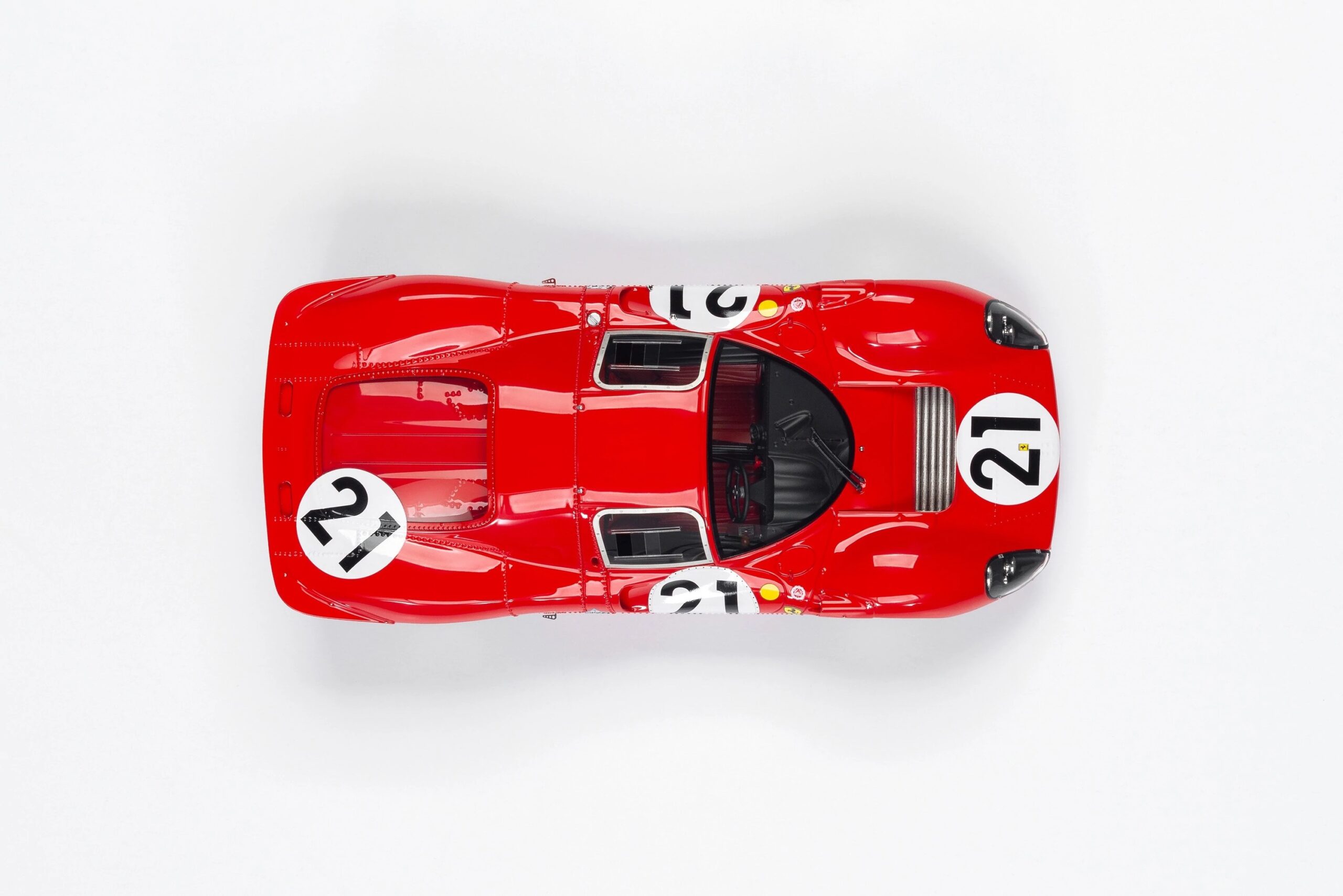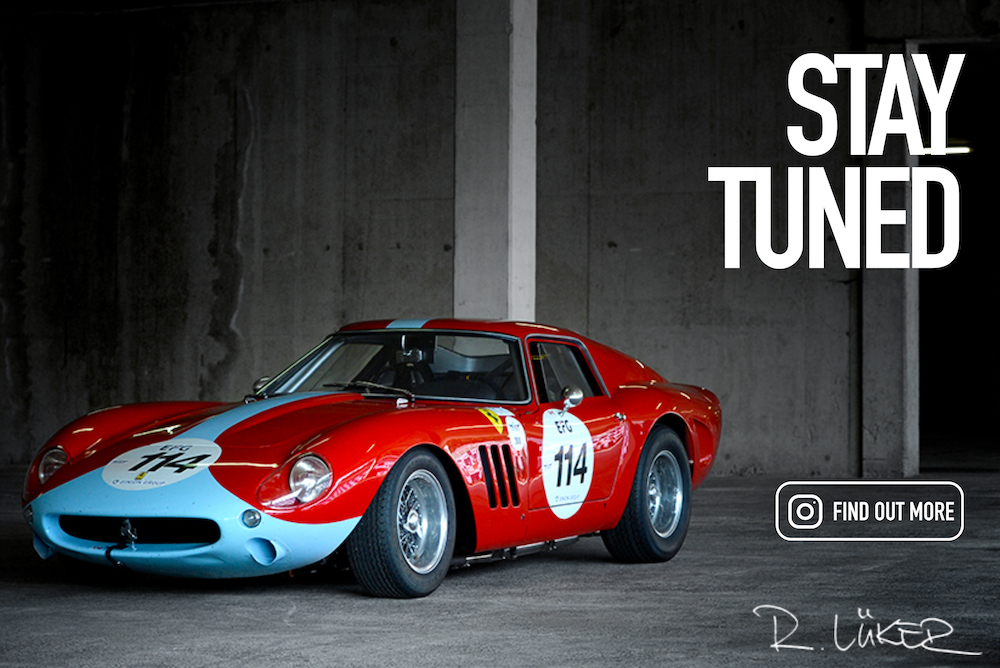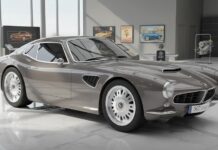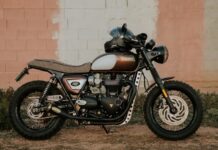One of the most revered Ferrari race cars of all time, the 330 P4 was one of the last Ferrari prototypes that still resembled a sports car, hitting the world stage during one of its most exciting eras. Improving upon its already successful 330 P3 predecessor, the 330 P4 gave Enzo Ferrari one of his proudest moments with a crushing 1-2-3 victory at the 24 Hours of Daytona in 1967.
Whilst the GT40 brought brute power and strength to the world’s race circuits, Ferrari stuck to their formula of smaller engine prototypes, trusting that this package of technical sophistication and sublime handling would outclass the American manufacturer’s torque in the end.
Pitted against the corporate might of Ford’s GT40 programme, which had beaten them at Le Mans in 1966, Ferrari’s engineers had a daunting task: defeating the Americans whilst balancing and their commitments in the World Sportscar Championship, Formula 1, Formula 2 and their road car business. Added to these burdens were labour unrest and parts shortages. To encourage a return to winning ways, Enzo Ferrari gave Technical Director Mauro Forghieri largely free reign in development.
Building on the knowledge gained from racing the 330 P3, the P4 was equipped with a new four litre V12 engine, radically redesigned by Franco Rocchi, featuring the introduction of a three-valve cylinder head modelled after those of the Scuderia’s Formula 1 cars. Fuel feed was still provided by a Lucas injection system, resulting in 450hp, an additional 30hp over the P3. The P4 had a shorter chassis but retained its predecessor’s shape, and a new suspension system improved roadholding. A new 5-speed gearbox was created to replace the unreliable Tipo 593 ZF transmission, whilst the car also sported cast magnesium Campagnolo wheels and wider Firestone tires to replace the Dunlops.
The 330 P4 chassis scored multiple victories but the undoubted highlight was the 1-2-3 finish at Daytona in February 1967. Two P4s, and one 412 P, crossed the finish line together for a photo finish to respond to Ford’s own victory at Le Mans the previous year. It is reputed that until Enzo Ferrari’s death, he kept a photograph of the winning trio on their final lap to victory, so much did this result mean to him.
This fine 1:18 scale model is based on chassis #0858 as raced to second position by Ludovico Scarfiotti and Mike Parkes in the 24 Hours of Le Mans at Circuit de la Sarthe on the 11th of June 1967. Qualifying in seventh position, Ferrari were initially cautious, driving within their capability to last the distance. After the first round of pit stops, the Ford GT40 Mk IV driven by Dan Gurney and A.J. Foyt took the lead for the first time, maintaining a pace in the race which the Italians considered would be a fatal mistake.
They were very nearly proved right, as a chain collision at the Tertre Rouge took out three of their rival Fords overnight, propelling the #21 Ferrari into second place. Unfortunately for the duo, the Ford lead was already five laps and, when finally given the signal to push, it was too late. Ford took the victory, but Ferrari salvaged pride with Scarfiotti and Parkes in second and the privateer 330 P4 entry of Willy Mairesse and Jean Blaton in third. Even half a century later, this edition of Le Mans is still celebrated by motorsports historians and fans alike.
This model has been handcrafted and finished in our workshops with the co-operation and assistance of Ferrari regarding original finishes, materials, archive imagery and drawings. The use of supremely accurate digital scanning of the original car has allowed us to perfectly recreate every detail at scale. Furthermore, it has undergone detailed scrutiny by both engineering and design teams to ensure complete accuracy of representation.
- 1:18 scale model, over 23 cms/9 inches long
- Each model hand-built and assembled by a small team of craftsmen
- Made using the finest quality materials
- Over 800 hours to develop the model
- Precisely engineered parts: castings, photo-etchings and CNC machined metal components
- Original CAD designs created after scans of the only remaining car in existence
- Archive imagery and paint codes supplied by Scuderia Ferrari
Click here for further information
more information: amalgamcollection.com

